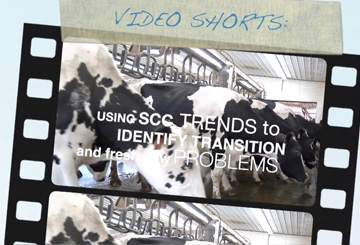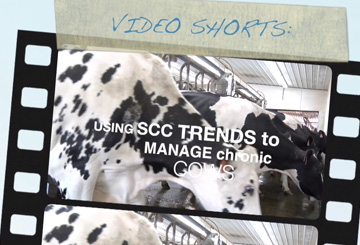Subclinical mastitis is the most common form of the disease on many dairy farms and is diagnosed based on observation of the cow’s immune response to infection of the udder. The only way we can measure minimal immune response is to measure monthly somatic cell counts. Check out these video shorts on how to use SCC to manage subclinical mastitis on your farm.
Introduction: Using SCC to Evaluate Subclinical Mastitis
Quick introduction to the video series.

Why SCC is Used to Manage Subclinical Mastitis
Subclinical mastitis is defined as normal-appearing milk that has evidence of a response to an infection in the cow. Learn why somatic cell counts are used to measure when, where and how long cows are subclinically infected.

Using SCC to Troubleshoot Bulk Tank SCC Problems
This short video guides us through how to use individual cow's SCC data to troubleshoot bulk tank SCC problems.

Using SCC Trends to Identify Transition and Fresh Cow Problems
Not all cows are at equal risk of environmental mastitis. Learn how to identify SCC trends by days in milk and lactation groups.

Using SCC Trends to Identify Herds with Contagious Mastitis Problem
This video short is about using somatic cell count trends to identify cows that have problems with contagious mastitis. Find out what kind of data you need to be monitoring, how to use this data and how to understand trends and patterns of prevalence.

Using SCC Trends to Identify Herds with Environmental Mastitis Problems
Not all cows are at equal risk of environmental mastitis. Learn how to identify SCC trends by days in milk and lactation groups.

Using SCC Trends to Manage Chronic Cows
This video short is about identifying cows with chronic subclinical infections by tracking a series of individual cow somatic cell count values over time. Learn how using this data can help make management decisions for these cows and minimize the risk for healthy ones.
